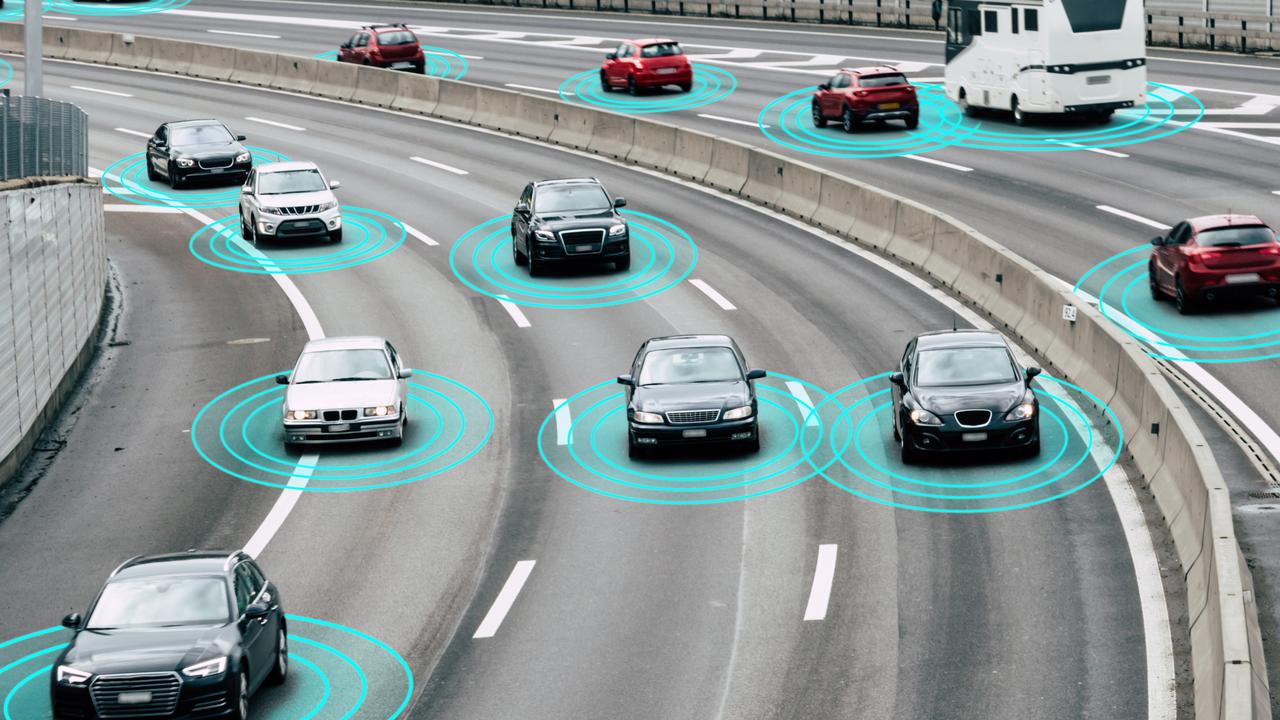Australian scientists take massive step towards safe driverless cars
A group of local scientists has made a monumental breakthrough that could dramatically change the way we drive in congested cities.
Australian scientists have made a big breakthrough in the race to develop driverless cars, taking the new tech to the streets of Sydney.
The homegrown technology — called collective perception messaging — enables cars to “see” around obstacles and through buildings, giving them better knowledge of any impending risks to vulnerable road users such as pedestrians and cyclists.
The tech connects driverless cars, giving them the ability to send information to other connected vehicles and devices, creating a more complete picture of their surroundings.

This is achieved through what the scientists called an intelligent road side unit, a stationary device that uses an array of sensors to build a digital image of its surrounding area that is then relayed to the connected driverless car.
This allows for the driverless car to increase its field of vision so it can plan and act on any perceived risks.
The tech was tested live in Sydney’s CBD and demonstrated how a vehicle could “see” through a building and take evasive action to avoid a hidden pedestrian about to run across the road.
The research group was made up of scientists funded by the iMove Cooperative Research Centre.

Professor Eduardo Nebot from the University of Sydney’s Australian Centre for Field Robotics said failing to maintain a sufficient level of awareness of other road users could have catastrophic consequences, but this tech went a long way to alleviating such problems.
Sr Mao Shan, the project’s lead researcher, said it was one of the first demonstrations of driverless cars working with collective perception messaging technology.
“We demonstrate in the experiments that a connected vehicle can ‘see’ a pedestrian around corners,” he said.
“More importantly, we demonstrate how connected autonomous vehicles can autonomously and safely interact with walking and running pedestrians.”
Connected vehicle technology could become more common as 5G mobile networks get rolled out. The super fast networks can transmit data between cars in a fraction of a second allowing for quicker decision making.

In 2019, Lexus Australia announced it would be taking part in a connected car trial with VicRoads.
The trial equipment included an array of cameras and sensors designed to alert drivers of upcoming potentially dangerous situations such as another vehicle running a red light or when vehicles further down the road have stopped suddenly.
Any rollout in connected cars could see your commute change dramatically by helping to increase traffic flow improving commute times and reducing the road toll.
Most car companies and tech giants — including Uber, Amazon and Google’s parent company Alphabet — have been developing driverless car tech with some success.
Many cars now have semi-autonomous technology that can steer, brake and change lanes on its own. But a human must always have its hands on the wheel.




